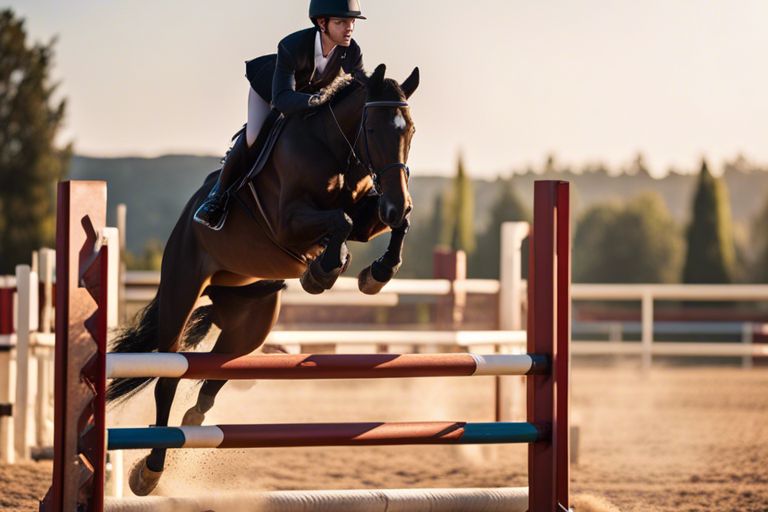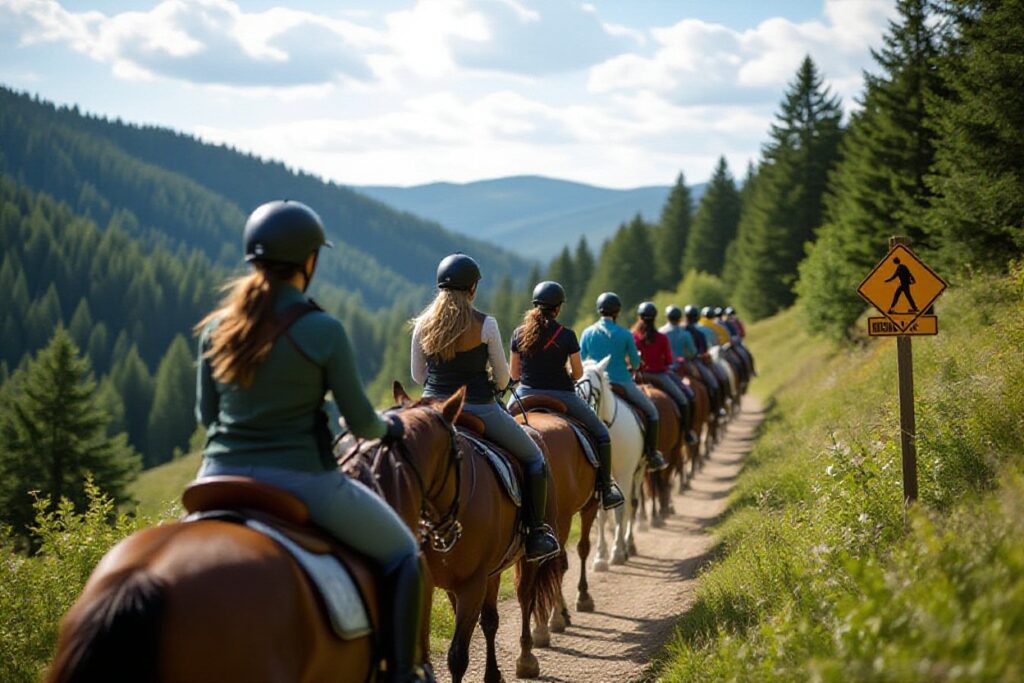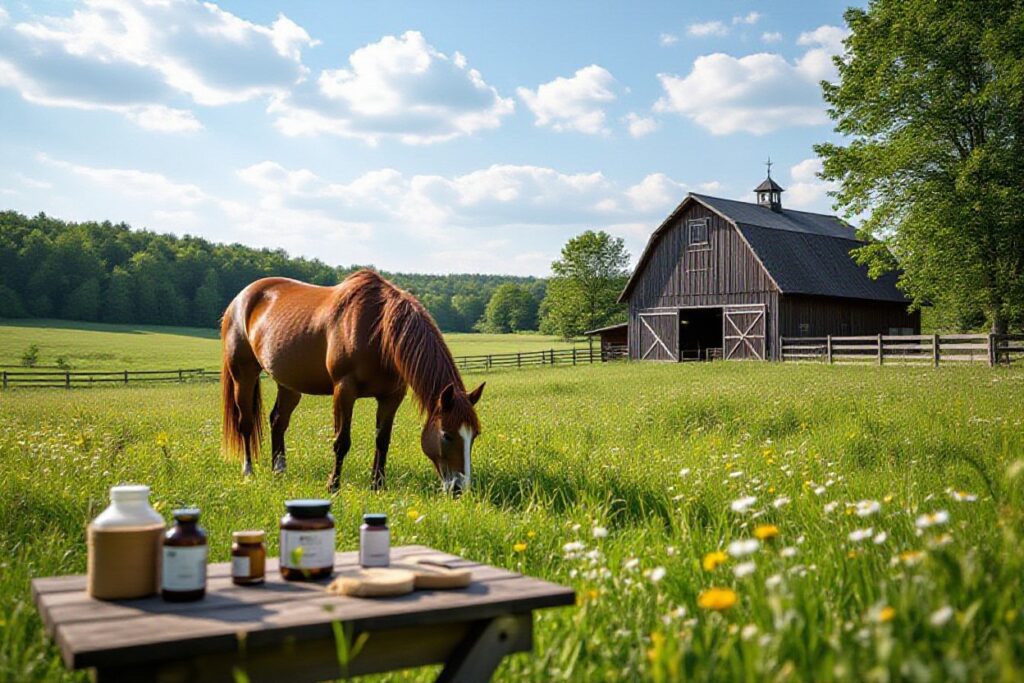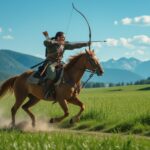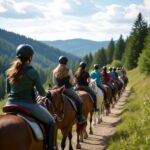Many aspiring riders like you are eager to learn the fundamentals of horse jumping. Understanding the basics is crucial to ensure safety for both you and your horse. Let’s look into the imperative tips and techniques to help you get started on this exciting equestrian journey!
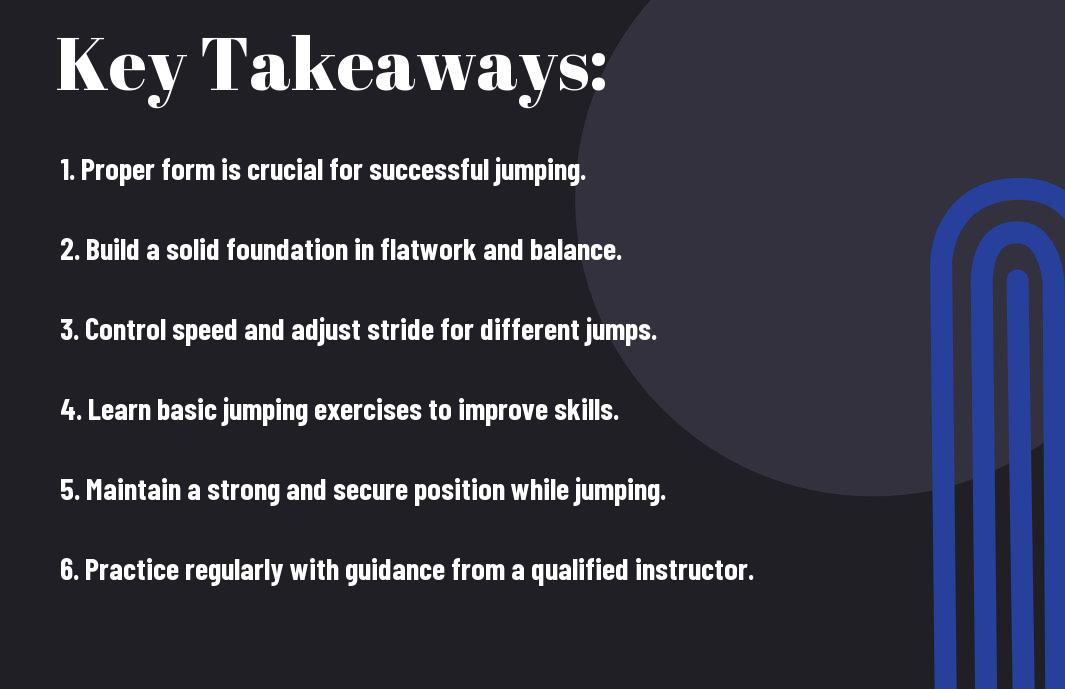
Getting Started
Your journey into the world of horse jumping begins with key decisions on your horse and equipment. Let’s probe the necessarys to get you started on the right hoof!
Choosing the Right Horse
Horse jumping requires a partner that is not only willing but also capable of tackling the obstacles ahead. Look for a horse with a calm temperament that is responsive to your cues and shows an interest in jumping. Consider the horse’s size and build as well, as different courses may favor certain characteristics. Working with a seasoned and reliable horse can boost your confidence as you learn the ropes in the world of horse jumping.
Essential Equipment for Horse Jumping
With the right equipment, you and your horse can approach each jump with confidence. Invest in a well-fitted saddle and bridle that allows for clear communication between you and your horse. Protective gear such as a helmet is non-negotiable for your safety during practice and competitions. Additional equipment like boots for your horse’s legs and a saddle pad for comfort can enhance the jumping experience for both of you.
It’s necessary to ensure that all equipment is properly maintained and fits both you and your horse correctly. Regular checks and replacements are necessary to prevent any accidents due to wear and tear. Prioritize safety and comfort to set a solid foundation for your horse jumping journey.
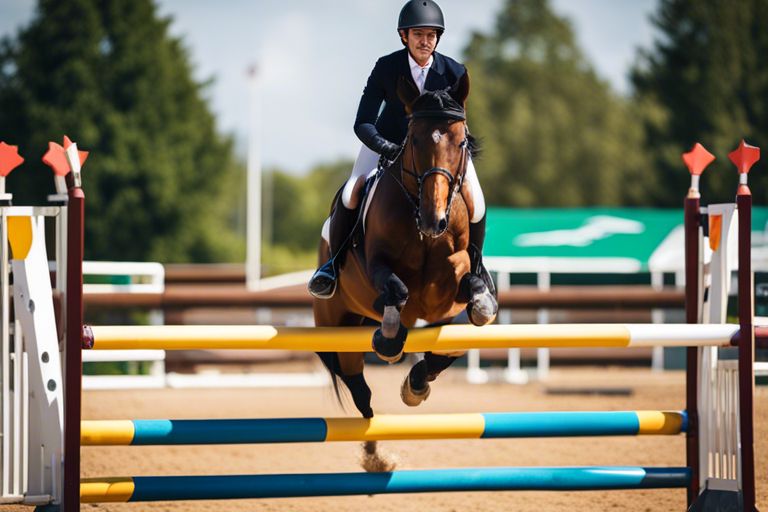
Horse Riding Basics
If you are new to horse riding, it is crucial to familiarize yourself with the basics before attempting any jumping exercises. Riding a horse involves not only enjoying the experience but also understanding how to communicate effectively with your equine partner.
Mounting and Dismounting
On your journey to becoming a skilled rider, knowing how to properly mount and dismount your horse is crucial. When mounting, make sure the saddle and stirrups are adjusted correctly to your height. To mount, put your left foot in the stirrup and push yourself up off the ground. Swing your right leg over the horse’s back and settle into the saddle. Dismounting follows a similar process, ensuring a smooth and safe transition off the horse.
Balance and Posture
Basics of maintaining balance and posture while riding are fundamental skills to master. Your balance on the horse is key to staying secure and in control during jumps. Keep your weight down in your heels, and your body tall but relaxed, in line with the horse’s movement. This position allows you to move with your horse effortlessly, aiding in your overall performance.
Plus, good posture not only enhances your riding abilities but also establishes clear communication with your horse.
Communication with Your Horse
Basics of connecting with your horse through communication play a vital role in developing a strong partnership. Your horse can pick up on subtle cues, like body language and rein pressure, to understand your intentions. By using clear and consistent signals, you can guide your horse effectively through different movements and jumps.
For instance, a slight shift in your weight or a gentle squeeze with your legs can signal to your horse to prepare for a jump or change in direction. It’s crucial to establish trust and respect with your horse through effective communication, creating a harmonious and successful riding experience.
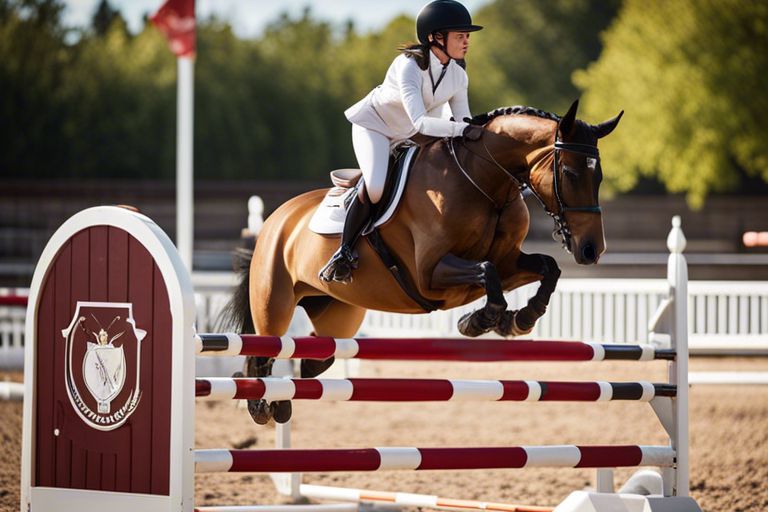
Jumping Fundamentals
Many new riders are intrigued by the thrill of jumping on horseback. However, before you can start jumping courses, it is crucial to master the fundamentals of horse jumping. This includes learning how to approach the jump, take off and land correctly, and execute proper jumping techniques.
Approaching the Jump
An important aspect of approaching a jump is establishing the right pace and rhythm. You should maintain a steady pace towards the jump, keeping your horse responsive to your aids. As you approach the jump, focus on maintaining a straight line and keeping your horse balanced. Look ahead to where you want to go after the jump, which will help guide your horse over the obstacle.
Taking Off and Landing
Landing after a jump is as crucial as taking off. Ensure you give your horse enough release with the reins to allow them to stretch their neck and back over the jump. This will help prevent your horse from hitting the jump with their front legs. Additionally, upon landing, allow your horse to rebalance themselves and continue forward in a controlled manner.
Approaching the Jump: As you gain more experience, you will learn to adjust your pace and approach to different types of jumps, including verticals, oxers, and combinations. Each type of jump requires slightly different techniques in approach and execution, so practice and patience are key.
Jumping Techniques for Beginners
Approaching a jump, maintain a light seat and relax your hips and knees to allow your horse to move freely beneath you. As you near the jump, adopt a two-point position by slightly leaning forward and supporting your weight in your stirrups. This position helps your horse take off smoothly and allows you to stay balanced over the jump.
The basics of horse jumping for beginners: As you progress in your jumping skills, remember that safety is paramount. Always wear appropriate safety gear, including a certified helmet and riding boots. Practice regularly with a qualified instructor to improve your technique and build your confidence over jumps.
Course Navigation
Keep your eyes sharp and your mind focused during a horse jumping course. Course navigation is a crucial element of successful jumping, requiring you to read the course, pace your ride effectively, and master turning and changing direction seamlessly.
Reading the Course
On each course, you’ll find a series of jumps presented in a specific sequence. Take a moment to walk the course before your ride to familiarize yourself with the layout. Look for the numbers of each jump, as they indicate the order in which you must tackle them. Consider the distances between jumps and any challenging elements, such as tight turns or related distances.
Pacing and Timing
To achieve a successful round, you must master pacing and timing. This involves maintaining a consistent rhythm throughout the course, approaching each fence at a suitable speed to ensure a safe takeoff. Be mindful of, each jump requires a different stride length, so adjust your pace accordingly.
This precision is vital in maintaining the horse’s balance and ensuring a smooth performance. A well-paced ride can help you avoid refusals or knock-downs, leading to a successful round.
Turning and Changing Direction
This aspect of course navigation is often overlooked but is crucial for a polished performance. Practice making smooth turns, using your inside aids to guide your horse around corners and change direction effectively. Remember to look ahead to your next jump while turning to maintain a steady pace and plan your approach.
Direction:
Avoid sudden or sharp turns, as they can throw off your horse’s balance and impact your performance. By mastering the art of turning and changing direction smoothly, you’ll be one step closer to becoming a confident and skilled jumper.
Safety Precautions
For beginners, safety should always be the top priority when it comes to horse jumping. Here are some necessary safety precautions to keep in mind:
Wearing Protective Gear
Precautions: Before you start jumping, make sure you are wearing the proper protective gear. This includes a well-fitted helmet, sturdy boots with a heel to prevent your foot from slipping through the stirrup, and protective vests. These items are designed to keep you safe in case of a fall or accident. It’s crucial to invest in quality gear and ensure it fits you correctly to maximize its protective capabilities.
Inspecting the Course
Course: Before you begin jumping, take the time to walk around and inspect the course. Check the condition of the jumps, looking for any loose parts, sharp edges, or potential hazards. Inspect the footing of the arena or field to make sure it is suitable for jumping to avoid slips or falls. Additionally, familiarize yourself with the layout of the course to plan your approach to each jump effectively.
Another important aspect of inspecting the course is understanding the height and complexity of the jumps. Pay attention to any challenging obstacles or combinations that may require extra skill and precision to navigate safely. Take note of any potential distractions in the surroundings, such as noisy spectators or other animals, that could spook your horse during the jump.
Emergency Procedures
Protective: In case of an emergency during a jump, it’s necessary to know the proper procedures to keep yourself and your horse safe. If you feel like you are losing control or your horse is becoming unruly, stay calm and steady in your seat. Use your reins and voice commands to communicate with your horse and guide them through the jump. Remember to always prioritize your safety and dismount if necessary to avoid any potential risks.
Inspecting the course for emergency exits and access points is also crucial. In the event of a fall or accident, you should be able to quickly exit the arena or field to seek help or medical attention. Familiarize yourself with the location of first aid kits and emergency contacts in case of any injuries. By being prepared and aware of your surroundings, you can mitigate risks and ensure a safer jumping experience.
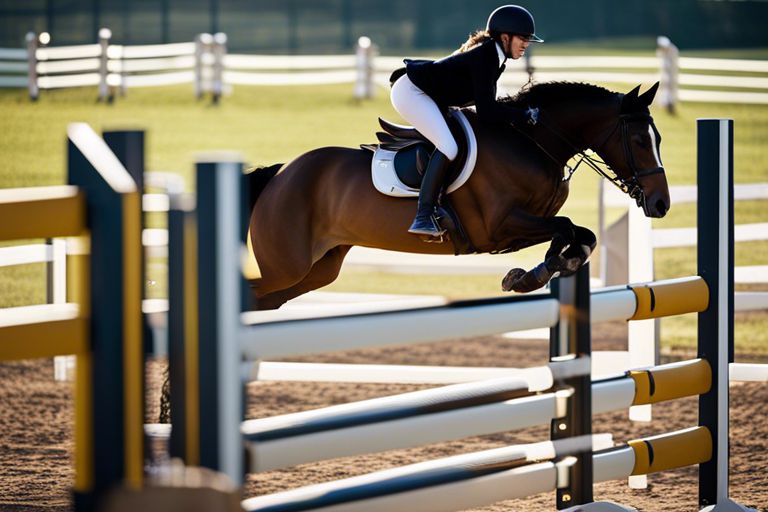
Common Mistakes to Avoid
Rider Errors
The most common mistakes beginners make when horse jumping come from rider errors. For example, leaning too far forward or backward, rather than staying centered over the horse’s center of gravity, can throw off the balance and coordination needed to successfully clear a jump. Another common error is gripping with your knees, which can destabilize your seat and make it harder for the horse to move freely beneath you.
Horse Handling Mistakes
Common mistakes in horse handling can also impact your jumping performance. This includes issues such as incorrect rein contact or not giving clear signals to your horse, which can lead to miscommunications and missed cues during a jump. Improper grooming and tack fitting can also affect your horse’s comfort and focus, so it’s vital to pay attention to these details.
Course Misjudgments
Mistakes in course misjudgments can significantly impact your performance and safety while horse jumping. For instance, misjudging the distance to a jump can result in your horse taking off too early or too late, leading to a dangerous situation. It is crucial to practice course memorization and develop a good eye for distances to ensure smooth navigation through the course.
Conclusion
As a reminder, mastering the basics of horse jumping lays a solid foundation for your journey in this exciting equestrian sport. By understanding the importance of proper posture, balance, and communication with your horse, you can enhance your skills and build a strong partnership with your equine companion. Remember to always prioritize safety and practice patience as you progress in your training.
Whether you dream of competing in show jumping events or simply enjoy the thrill of clearing obstacles with your horse, honing your skills through consistent practice and seeking guidance from experienced trainers will be key to your success. Embrace the challenges, celebrate your achievements, and most importantly, cherish the special bond you share with your horse as you begin on your horse jumping journey. Happy riding!
Q: What are the basic components of horse jumping?
A: The basic components of horse jumping include the approach, takeoff, flight, landing, and getaway.
Q: What are the different types of jumps in horse jumping?
A: There are various types of jumps in horse jumping, such as verticals, oxers, combinations, and triples.
Q: How can I improve my jumping position as a beginner?
A: To improve your jumping position as a beginner, focus on keeping your heels down, eyes up, shoulders back, and a secure but flexible lower leg.
Q: What are some common mistakes to avoid in horse jumping?
A: Common mistakes to avoid in horse jumping include looking down, gripping too tightly with your knees, leaning forward, and missing your distances.
Q: How can I prepare my horse for jumping as a beginner?
A: To prepare your horse for jumping as a beginner, work on developing their fitness, impulsion, and responsiveness to aids both on the flat and over small jumps before progressing to more advanced exercises.
